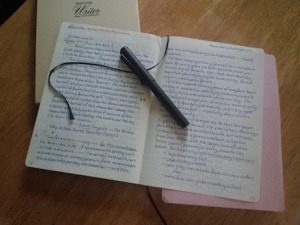Don’t be fraudulent — write what you know.
How many times have I heard/read that statement, how many times has it been written, how many times repeated? And the writer, the reader, the sayer… have they understood what it meant?
Have they taken it literally, like this author? Or, like me? I took it literally, write what you know, then tossed it out as nonsense, gibberish. That writer’s rule left a very narrow scope for any author to explore, and rendered most work, good or bad, classic or newly written, invalid.![William Shakespeare: attribute, Élisée Reclus [Public domain], via Wikimedia Commons](https://i0.wp.com/upload.wikimedia.org/wikipedia/commons/f/f2/D511-_William_Shakespeare_-_liv3-ch14.png)
Mary Shelley never built a living monster; William Shakespeare was not an ancient Roman, or a Scottish king, for example. Yet we treasure their work, re-read their words with reverence and admiration.
What I Learned
Gradually — and I do mean gradually 🙂 — I figured out that the phrase write what you know, was talking about experience, and implied that my experience was transferable, my emotions expandable, and both, when called upon, would add the depth and colour required — absolutely required — to whatever your, and my imagination could conjure up.
‘What If’ grew wings, breathed and laughed and cried, shouted or whispered, just as I imagined, infused with whatever I could pull from my own life, loves, experiences. I wrote what I knew.
Passion, writing from the heart; another way to ‘write what you know’, really know, because if my words are truly passionate, they are not ‘fraudulent’, they are what I am.
How to execute?
All kinds of easy, to talk about writing what you know, but can you? How do you disconnect from all the should-/would-/could-haves that govern our lives as we navigate the real world?
‘What If’ becomes … what if — what if your characters, their fears, loves, hatred, true confessions — all fiction, you see, part of the plot — are so passionate, so ‘knowing’ that people recognize you or themselves?
“All very well,” the critic writes, “the story is 1,000 years before or after today, but we still know it’s you!”
That’s where the ‘bleed’ comes in. Only you can decide how much, when, where, to “open your veins and bleed”, as Red Smith described, in 1949.
(Metaphorically, or course. I don’t think that he actually… you don’t believe he really… naw.)
And then there’s the edit. Think of the edit as first, some soapy water and a cloth, followed by a good daubing of disinfectant to the wound; but not so much that you’ve turned the wound into plastic surgery. The scars must remain, for all their truth and ugliness, or pain, or joy, for everyone to see.
Yes, But How?
Here’s what I found out about my own writing.
Recently I switched to pen and paper. I re-discovered that it opened up a slower world, pushed me back into my imaginary world, challenged my brain to ‘act’ out each scene, conversation, event, as I wrote.
It became a ‘stream of conscious’, which leant itself to the simplicity of pen on paper — no distractions — no crutches such as spell checkers, or Google, the complete abondonment of all the grammar, paragraphing, titles, the stuff we read in the finished work.
Just me and my story; words gushing, the ink capturing my heart as the scenes bleed themselves from my brain to the page. I found a ‘zone’, that rhythm I wrote about in another blog, a place where time, space, noise, the demands and obligations of every-day life drop away.
In those first words, my writing becomes the scene, the story, the ‘what I know’ that opens out and spills across that little paper notebook, all my heart, everything I am at the tip of a nib.
![William Shakespeare: attribute, Élisée Reclus [Public domain], via Wikimedia Commons](https://i0.wp.com/upload.wikimedia.org/wikipedia/commons/f/f2/D511-_William_Shakespeare_-_liv3-ch14.png)
